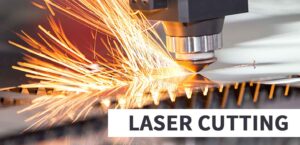
In today’s fast-paced manufacturing landscape, companies are constantly searching for innovative technologies that enhance precision, efficiency, and cost-effectiveness in their production processes. One of the standout technologies that has revolutionized metal fabrication is fiber laser cutting. This advanced method leverages high-power lasers to slice through metal with unparalleled accuracy, offering significant advantages over traditional cutting techniques. This article explores the benefits of fiber laser cutting, its applications, and why it is becoming the preferred choice for manufacturers across various industries.
What is Fiber Laser Cutting?
Fiber laser cutting utilizes a laser beam generated from a fiber optic source to melt, burn, or blow away material. The laser beam is focused through optics to achieve a small, precise spot size, resulting in clean edges and high-quality cuts. The technology involves directing the laser onto the material’s surface, where it can cut through metal thicknesses ranging from thin sheets to several inches thick, depending on the power of the laser and the type of metal being processed.
Advantages of Fiber Laser Cutting
1. Exceptional Precision and Quality:
Fiber laser cutting offers an unmatched level of precision due to its fine spot size, allowing for intricate designs and shapes. This high level of accuracy minimizes the need for post-processing, as the cuts are clean and smooth, reducing the need for secondary finishing operations.
2. Speed and Efficiency:
One of the most significant benefits of fiber laser cutting is its speed. The cutting process is quicker than traditional methods like gas or plasma cutting, allowing manufacturers to increase production throughput. Additionally, fiber lasers can cut multiple materials simultaneously, enhancing operational efficiency.
3. Reduced Operating Costs:
Unlike CO2 lasers, fiber lasers are more energy-efficient and require less maintenance. They convert a higher percentage of electrical energy into laser energy, reducing operating costs over time. Furthermore, fiber laser cutting requires minimal consumables and has lower gas usage, making it a cost-effective solution for metal fabrication.
4. Versatility:
Fiber lasers are capable of cutting a wide range of materials, including stainless steel, aluminum, brass, copper, and even plastics. This versatility makes them suitable for various applications, from automotive components to aerospace parts and electronic housings.
5. Ease of Automation:
Advanced fiber laser cutting systems can easily integrate into automated production lines, aligning with modern manufacturing trends toward automation and Industry 4.0. The ability to connect the laser systems with CAD/CAM software allows for seamless design-to-production workflows, enhancing productivity further.
Applications of Fiber Laser Cutting
Fiber laser cutting technology finds applications in numerous industries:
– Automotive Industry: Manufacturers use fiber lasers to cut complex geometries and lightweight parts, optimizing fuel efficiency while maintaining safety standards.
– Aerospace and Defense: The demand for precision and reliability in aerospace components makes fiber laser cutting an ideal solution for creating high-performance parts.
– Electronics Manufacturing: Fiber laser cutting is used to manufacture precision components with tight tolerances, necessary for modern electronic devices.
– Sheet Metal Fabrication: Sheet metal shops have embraced fiber laser cutting for its ability to create intricate designs efficiently while maintaining quality.
Conclusion
Fiber laser cutting technology is reshaping the landscape of metal fabrication and manufacturing with its incredible precision, speed, and efficiency. As companies continue to adopt this cutting-edge technology, they are not only improving their output quality but also reducing operational costs significantly. The versatility of fiber lasers allows businesses across various industries to implement this technology for diverse applications, ultimately leading to increased competitiveness in a global market. As advancements continue in laser technology, it is likely that fiber laser cutting will further enhance production capabilities, paving the way for the future of manufacturing.
由用户投稿整理稿件发布,不代表本站观点及立场,仅供交流学习之用,如涉及版权等问题,请随时联系我们(yangmei@bjjcz.com),我们将在第一时间给予处理。






